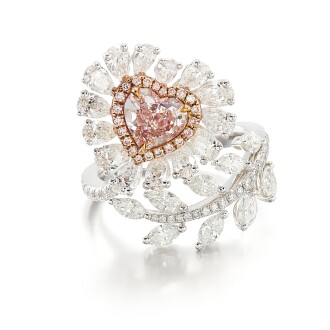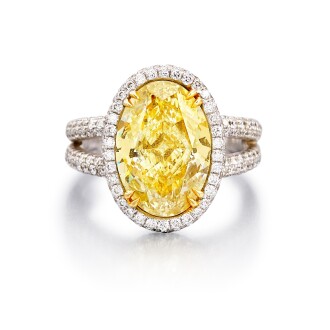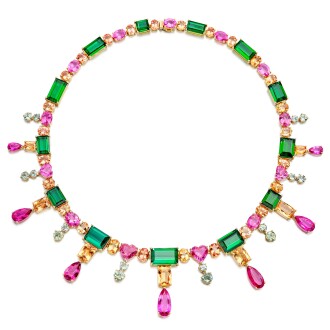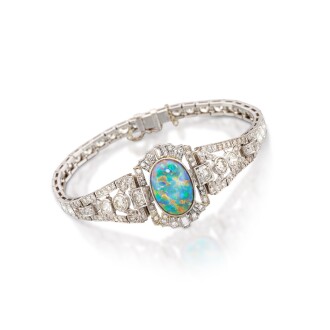C olour has always been synonymous with artistic creation. Famous artists ranging from Yves Klein to Piet Mondrian have always chosen specific shades to express their feelings or thoughts. For Klein it was vibrant blue that best represented his spirituality and religious upbringing, while Mondrian’s simplified palette of primary colours reflected his desire to communicate universal beauty. Like art, gemstones of all colours each possess cultural and symbolic values that goes beyond aesthetics.
Coloured gemstones have always been revered throughout the ages. In ancient times, they were recognised for their healing properties, and Native American cultures as well as the Mayans and the Aztecs included special stones in ceremonies and sacred rituals. The Greeks even used certain gemstones in their amulets for protection. Because of their scarcity, coloured gemstones were prized as symbols of power and status by the elite ranging from Egyptian pharaohs, Chinese emperors and Indian maharajas to modern-day royals, and heads of state.
It’s no wonder that notable institutions such as the Victoria & Albert Museum have showcased important jewels alongside other relics and antiquities. The latter is home to the popular Townshend collection which includes a multicoloured display of 183 gemstone rings formerly in the collection of poet and Reverend Chauncy Hare Townshend. Meanwhile, London’s Natural History Museum features the Aurora Pyramid of Hope, which is a sight to behold. Like many other priceless works of art displayed in the museum, colour plays a starring role, showcased in the form of 295 naturally coloured gemstones in a rainbow of hues that defy the imagination.
So, what is it about coloured gems that make them so alluring? Most of them, including diamonds, were formed in the earth giving each a specific chemical composition. Their colour is partly determined by mother nature and can change depending on the presence of certain minerals or chemicals. For example, copper ions give turquoise its unique shade of blue while aluminium or iron impurities lends citrine the perfect shade of yellow.
Light is another factor that comes into play. When light hits an object, its absorbed and then refracted to produce a specific colour. With gemstones, this process of light refraction can change depending on the stone’s structure, or presence of natural minerals or impurities. This results in each stone producing its own unique colour, ranging from solid hues to rainbow like effects. The colour spectrum is so broad that it could easily rival a pantone chart.
For many connoisseurs the colour of a gemstone is just as important as, if not more than, clarity, cut and size. While personal preference plays a key role, other considerations for choosing specific stones include associations with important milestones in life, be it a birthday or anniversary.
Over time stones of a specific colour have become associated with certain feelings, emotions, or traits. Of all the gemstones colours, red is said to be the most powerful because it represents power and strength. The striking hue is also said to offer protection and boost confidence. It is also one of the rarer colours on offer, which may explain why it has been favoured by royalty over the years. In fact, red gemstones feature prominently in the British Crown Jewels, including the Imperial State Crown which features the “Black Prince’s Ruby,” which in fact is a large red spinel.
Pink gemstones are adored for obvious reasons. Pink is a colour closely associated with femininity and beauty and is seen in a range of different stones including padparadscha sapphires, topaz, morganite and rose quartz. Pink diamonds are highly sought after due to its scarce supply and unique blush tones. One of the most coveted pink diamonds in the world includes the CTF Pink Star, a fancy vivid pink stone which was mined in 1999 and weighs 59.60 carats. This masterpiece of nature was sold by Sotheby’s in 2017 for HK$553 million (US$71.2 million), and still holds the record for any diamond or jewel sold at auction in Asia.
If pink is associated with our feminine side, then yellow appeals to our masculinity. According to traditional Chinese colour symbolism, it is an imperial colour that represents power, prosperity and creativity. Many yellow gemstones such as citrine are known for their health properties and can promote emotional well-being and increase positive energy.
Orange gemstones share similar properties to yellow stones and are coveted for the fact that they can bring vitality to its wearer. There are however fewer varieties of orange-tinged gems; popular choices include topaz, garnet, carnelian and amber. Most of these are said to bring joy, creativity and confidence to its wearer.
Green is a colour associated with fortune and abundance across multiple cultures. While wearing a green gemstone can bring both things to your life, it is also a reminder of the power of nature and therefore is regarded by many cultures as a healing stone. The colour is also considered sacred in certain religions including Islam and is said to offer protection. The Egyptians would often bury emeralds alongside their dead for this reason. Popular green gemstones include emeralds, tsavorite garnet and of course green jadeite. The latter is extremely important in Chinese culture and is known as the “stone of heaven.” According to Confucius’ Book of Rites, it also represents eleven virtues and is considered a symbol of longevity, regeneration and new growth.
Blue is another colour closely tied with the natural world. It mirrors the colour and properties of the sky and ocean and can create similar feelings of peace and calm. For this reason blue stones are viewed as symbols of the spiritual world and include lapis lazuli, paraiba tourmaline and turquoise. They are among the most versatile of gemstone colours as they suit almost any skin tone.
A purple gemstone is ideal for those seeking inspiration and wisdom. Purple is traditionally associated with royalty. For example, Julius Caesar declared that only he and no one else in Ancient Rome should be allowed to wear the colour. According to the ancient Indian healing system, it’s the colour associated with higher truth and spiritual awareness. It is said that purple stones such as amethyst and tanzanite have a meditative quality. It is also a colour that is associated with luck and good fortune, in both Eastern and Western cultures.
If one colour isn’t enough then why not embrace them all? There are some gemstones that combine the best of the colour spectrum including opals. Like a chameleon, these natural marvels change their colours when exposed to light bringing the best of all colours to its wearer.











































